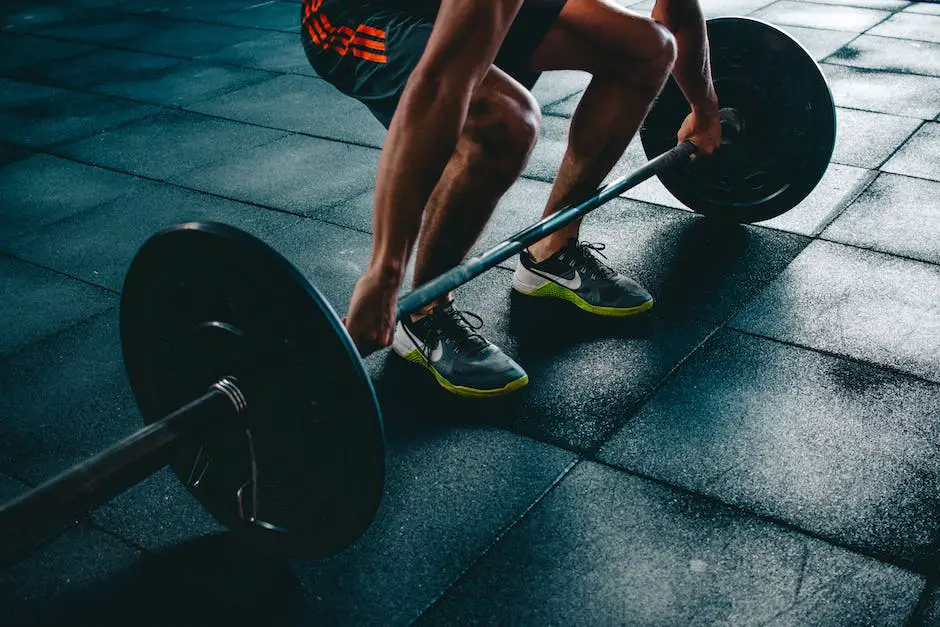Ladies and gentlemen, it’s time to grab your weights and break your fasts, because we’re about to delve into the world of optimizing training through weight lifting during fasting! Don’t worry, we won’t turn you into mindless zombies who crave brains (or do we?), but we will give you the lowdown on how to become a lean, mean fasting and lifting machine. So sit back, relax, and get ready to elevate your gains to a whole new level while keeping your belly empty – because what’s a little hunger when you’ve got those muscles to feed? Let’s do this.
Contents
- 1 1. The Science Behind Fasting and Weight Lifting: Exploring the Benefits and Risks
- 2 2. Pre-Workout Strategies: How to Prepare Your Body for a Lifting Session During Fasting
- 3 3. Weight Lifting Techniques for Better Results While Fasting
- 4 4. Post-Workout Nutrition: Key Considerations for Maximizing Muscle Recovery
- 5 Post-Workout Nutrition: Key Considerations for Maximizing Muscle Recovery
- 6 5. Implementing a Fasting-Weight Lifting Routine: Tips for Consistent Progress and Safety
- 7 Don’t let hunger get in the way of gains!
1. The Science Behind Fasting and Weight Lifting: Exploring the Benefits and Risks
Gather round, my fellow gym rats and nutrition enthusiasts! Today, we shall delve deep into the science behind two seemingly incompatible practices: fasting and weight lifting. The question on every gym-goer’s mind is – can you hit the iron on an empty stomach without passing out? Let’s find out!
First, let’s talk benefits. Fasting has been shown to improve insulin sensitivity, increase growth hormone levels, and promote fat oxidation. On the other hand, weight lifting is fantastic for building muscle mass, increasing bone density, and boosting metabolism. The logical conclusion here is that combining the two should yield some pretty impressive results.
- Bold move, Cotton! Fasting before lifting can actually boost energy and focus levels. It’s like your body is saying “Hey, I’ve got no food to digest, might as well turn up the heat on these biceps!”
- Another benefit of working out in a fasted state is that it can shift your body’s energy source from carbs to stored fat, leading to greater fat loss and better overall body composition.
- However, it’s worth noting that fasting and lifting isn’t for everyone. If you have any underlying health issues, such as diabetes or hypoglycemia, it’s best to consult with a doctor before attempting the fasted gym life.
To sum it up, there are definitely benefits to be had from combining fasting and weight lifting, but there are also risks involved. It’s up to each individual to weigh the pros and cons and decide if it’s worth a try. Just remember, if you do decide to give it a go, always listen to your body and don’t be afraid to break your fast if you start feeling light-headed. Happy lifting!

2. Pre-Workout Strategies: How to Prepare Your Body for a Lifting Session During Fasting
So you’re planning to lift weights during fasting, huh? You must be going for that Spartan look – all chiseled and ready to fight in the arena. But before you start lifting those weights, here are some pre-workout strategies you should know to help you prepare your body for an intense lifting session.
Firstly, hydrate like it’s your job. You’re already at a disadvantage since you haven’t had food in a while, so keeping yourself hydrated is super important. Not only will it prevent you from getting cramps, but it’ll also help you perform at your best during that lifting session. And no, coffee is not a good substitute for water. Drink up, buttercup!
Secondly, carb load before your workout. I know, I know, you’re fasting and can’t eat. But if you’re planning to lift weights during fasting, you need to be strategic about when you consume your carbs. Try eating some high-carb foods towards the end of your previous meal or during your eating window so that your body has some energy reserves to use during your lifting session. Plus, who doesn’t love a good excuse to eat pasta or breadsticks?
- So hydrate. Like really hydrate.
- Carb load before your fast.
Finally, take it slow and steady. You might feel like a warrior ready to conquer your lifting session, but your body might not be on the same page. Remember to give your body time to adjust to lifting weights during fasting, and don’t push yourself too hard too soon. And if you need to take a break or lower your weights, don’t worry – we’ve all been there. Just don’t use it as an excuse to skip leg day. You got this!
3. Weight Lifting Techniques for Better Results While Fasting
When it comes to weight lifting while fasting, you need to be extra cautious. After all, you don’t want to turn into a hangry Hulk and scare people away from the gym. To ensure you get the most out of your workout while fasting, here are a few weight lifting techniques that are sure to boost your results:
1. Super Slow Reps: This technique involves lifting the weight slowly and holding it for a few seconds before lowering it down. Not only does it help you focus on the muscle group you’re working on, but it also adds more tension and intensity to your workout. Think of it as a form of mindfulness meditation, but with dumbbells.
2. Compound Exercises: Why work on one muscle group when you can work on two or more at the same time? Compound exercises, like squats, deadlifts, and bench presses, are great for maximizing your time at the gym. Plus, they are sure to make you feel like a badass (in a good way).
3. Pause and Pulse: This technique involves pausing at the top or bottom of a movement, then pulsing (dum dum dum dum) for a few seconds before releasing or lifting the weight. It’s like adding a mini cardio session to your weight lifting routine – only without the treadmill and monotony. Trust me, your muscles will thank you later.
With these weight lifting techniques, you can make the most of your fasting routine. Just remember to keep your inner Hulk at bay and stay hydrated. Now, go ahead and lift those weights like a boss!
4. Post-Workout Nutrition: Key Considerations for Maximizing Muscle Recovery
Post-Workout Nutrition: Key Considerations for Maximizing Muscle Recovery
Let’s face it, working out can be a real pain in the glutes. But you know what’s even worse? Not seeing any results from all that effort you’ve put in. That’s where post-workout nutrition comes in – it’s like a superhero that swoops in to save the day (aka, your gains).
Now, to make sure that your post-workout nutrition routine is as effective as possible, here are a few key considerations:
- Timing is everything. You want to get those nutrients into your body ASAP, preferably within 30 minutes of finishing your workout. So don’t go wandering around the gym like a lost puppy – have your post-workout snack or drink ready to go.
- Protein, protein, protein. This is the building block of muscle, so make sure you’re getting enough of it. Aim for at least 20-30 grams of protein in your post-workout snack or drink.
- Carbs are cool, too. Carbs are important for replenishing glycogen stores in your muscles, so don’t skimp on them. You don’t need to go overboard, but aim for a 2:1 ratio of carbs to protein in your post-workout nutrition.
So there you have it, folks – the key considerations for maximizing muscle recovery with post-workout nutrition. Just remember, if you want to see those gains, take your post-workout nutrition seriously. Or, if all else fails, you could always just inject protein powder directly into your veins. (Just kidding, don’t do that).
5. Implementing a Fasting-Weight Lifting Routine: Tips for Consistent Progress and Safety
Paragraph 1:
Okay, so you’ve decided to combine fasting and weight lifting for a perfect body. Kudos to you! However, jumping into this routine can be a bit intimidating, not to mention, dangerous. But don’t worry, my dear readers – I have some top-notch tips to keep you on the track, no matter what!
– Don’t fast for more than 24 hours. Period. If you keep your stomach empty for longer, you may feel woozy, dizzy, or worse – you can faint. So, start with a 12-hour fast, and gradually increase it to 24 hours, if you can handle it.
– Do warm-up exercises to increase blood circulation in your body. Stretch all your muscles slowly, and do not exert too much pressure on any particular body part.
– Wear comfortable and flexible clothes that don’t restrict your movements. Oh, and leave the crocs at home. You’re not alone if you find them comfortable, but in the gym, they’re nothing less than a liability.
Paragraph 2:
Alright, now that you’re warmed up, let’s get into the main deal – weight lifting. Here are some tips to help you lift safely and powerfully.
– Always maintain correct form and posture before lifting weights. If you feel any strain or discomfort, stop immediately.
– Avoid lifting too much weight at once. For starters, use lightweights and gradually increase to heavier ones.
– Keep an eye on your breathing. Holding your breath while lifting weights, especially heavier ones, can result in dizziness or even blackouts. So breathe, baby, breathe!
Paragraph 3:
Wohoo! You’ve made it till the end. As promised, here are some final tips to keep you going:
– Stay hydrated throughout your workout session. Drink plenty of water and replenish lost electrolytes.
– For the love of superheroes, don’t skip meals after a strenuous workout. You need to refuel your body with healthy food to provide your muscles with the necessary energy and nutrients.
– Lastly, and most importantly, listen to your body. If you’re feeling too tired, dizzy, or sick, stop immediately and seek medical attention if needed.
Now go forth, my fellow fasters and weightlifters, and slay that gym like the bosses you are!
Don’t let hunger get in the way of gains!
Alright, folks, we’ve come to the end of our journey – the end of our article about optimizing your weight lifting training during fasting. We hope you enjoyed the ride and learned a thing or two. But before we go, we have one last piece of advice for you: don’t let hunger get in the way of your gains! Sure, fasting can be tough, but with the right mindset and approach, you can still achieve your fitness goals while giving your body a break. So go ahead, grab that barbell, and hit the gym – you’ve got this!








Leave A Comment